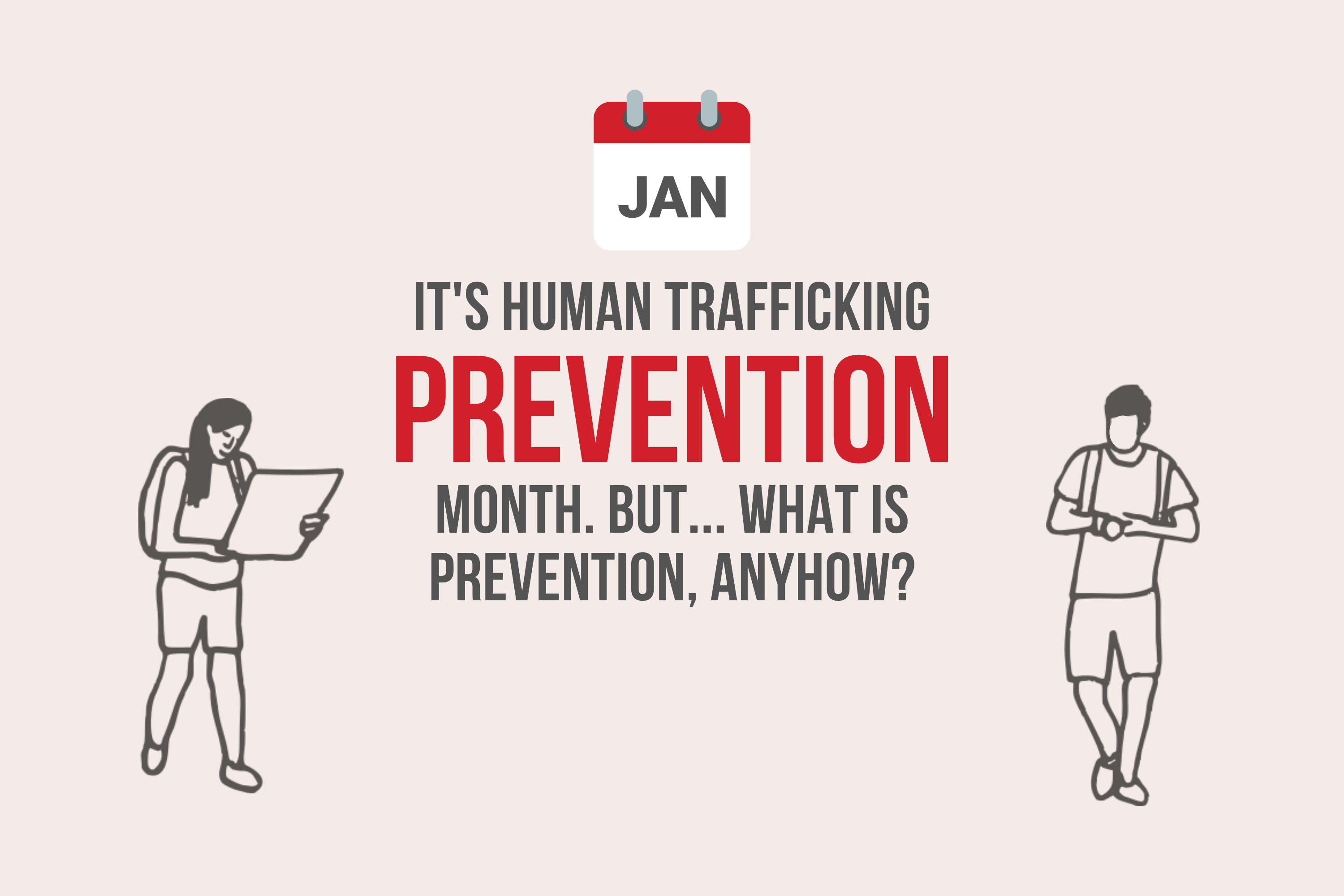It’s Human Trafficking Prevention Month. But… what is prevention, anyhow?

According to the US Presidential proclamation, it's Human Trafficking Prevention Month. You may be wondering, what exactly is prevention, anyways? Here's information on different ways to prevent human trafficking.
Primary prevention stops violence before it occurs.
Primary prevention strategies look at how we reduce risks and increase protective factors to buffer violence.
A few risk factors include…
- Food insecurity
- Housing instability
- Family rejection
- History of abuse, especially sexual abuse
- Child welfare or juvenile justice system involvement
- Substance dependance
- Family or friends involved in trafficking
- Undocumented or temporary immigration status
A few protective factors include…
- Supportive adult relationships
- Positive self-image and strong self-esteem
- Understanding of healthy relationships
- Consent and refusal skills
- Perception of legal rights
- Knowledge of online safety
- Usage of strong digital privacy settings
- Awareness of trafficking and exploitation
- Having basic needs met
- Community connection & availability of extracurricular activities
Secondary prevention provides an immediate response to violence as it occurs.
These services include first responses, such as basic services and emergency and medical care that address short-term consequences.
Tertiary prevention is long-term responses that occur in the aftermath of violence, that seek to prevent revictimization.
These activities could include long-term housing, job training, therapeutic counseling, and other supportive services
Awareness is not the same as prevention.
Awareness and prevention are different things! While awareness is very important, we should be clear that awareness isn't the same as prevention. Awareness is ensuring the public – including higher-risk groups – know about the realities of trafficking. There's a lot of evidence that knowledge is insufficient for changing behaviors. So prevention moves beyond conveying information, and works to do things like build skills and address vulnerabilities.
“One way well-meaning agencies, advocates, and staff sometimes muddy their prevention programming is by conflating outreach, awareness, and prevention. Outreach is not the same as awareness, and neither outreach nor awareness are sufficient prevention. Awareness can be part of a prevention strategy, but awareness alone does not prevent violence.”
North Carolina Coalition Against Sexual Assault
Read more from this source here.
This “Eyes on Trafficking” story is reprinted from its original online location.
 ABOUT PBJ LEARNING
ABOUT PBJ LEARNING
PBJ Learning is a leading provider of online human trafficking training, focusing on awareness and prevention education. Their interactive Human Trafficking Essentials online course is used worldwide to educate professionals and individuals how to recognize human trafficking and how to respond to potential victims. Learn on any web browser (even your mobile phone) at any time.
More stories like this can be found in your PBJ Learning Knowledge Vault.
EYES ON TRAFFICKING
This “Eyes on Trafficking” story is reprinted from its original online location.
ABOUT PBJ LEARNING
PBJ Learning is a leading provider of online human trafficking training, focusing on awareness and prevention education. Their interactive Human Trafficking Essentials online course is used worldwide to educate professionals and individuals how to recognize human trafficking and how to respond to potential victims. Learn on any web browser (even your mobile phone) at any time.
More stories like this can be found in your PBJ Learning Knowledge Vault.
